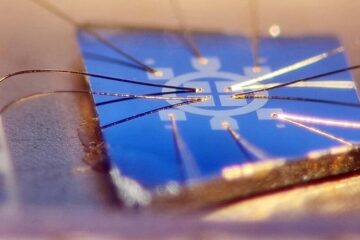Research urgently needed to treat blood clots in children

Potentially deadly blood clots are being missed in children, and more research and awareness is needed in the medical community, according to a study done in part at the University of Alberta.
“We don’t think of blood clots occurring in children, but they do,” said Dr. Patricia Massicotte, a professor of pediatrics at the University of Alberta, and one of the study’s authors.
A review of treatments for pulmonary thromboembolism (PTE) in children, conducted by the University of Alberta, the Edmonton Stollery Children’s Hospital and The Hospital for Sick Children in Toronto, revealed an acute need for more research into diagnosing the condition, whose symptoms can be misleading.
Review of data on 405 children who died in specialized pediatric hospitals in Canada between 1991-97 revealed that three per cent of the deaths were attributable to blood clots. “The condition does kill and it can also cause long-term cardiac problems or respiratory problems,” Dr. Massicotte said.
The review results appear in the March, 2005 issue of Pediatric Radiology.
The condition, which exists in children ranging from premature infants to the late teens, is often not discovered until the autopsy stage. PTE most frequently exists in children who suffer from underlying conditions such as heart disease or cancer. Blood clots can be brought on by several risk factors and causes including burns, heart disease, dehydration, obesity, renal disease, shock and surgery.
One of the highest risk factors for blood clots in children is a central venous line, a large catheter inserted into the body to administer medication or nutrients. The line can damage vessel walls. But at the same time, the line is needed to help care for children suffering illness or trauma, and that makes recognizing the symptoms of PTE all the more vital, Dr. Massicotte said.
While the causes of blood clots in 30 to 40 per cent of adults have unknown origins, to their surprise, the researchers discovered in the review that only four per cent of the clots in children presented without any risk factors, Dr. Massicotte noted.
“The other 96 per cent had at least two or more known risk factors. The expert care centres (pediatric hospitals) know that children develop blood clots, but there are a lot of other health professionals who still don’t recognize the signs and symptoms.”
Further research is needed, exploring such options as smaller catheters for pediatric patients, as well as clinical trials in using blood-thinners as preventive therapy. Currently, thinners are used only after a child develops clots.
Traditionally, researching more invasive treatment options for children has been regarded with reluctance, Dr. Massicotte said. “Because babies and children are so cute and innocent, we are reluctant to do studies, but we are not benefiting them at all by doing that.”
Media Contact
More Information:
http://www.ualberta.caAll latest news from the category: Health and Medicine
This subject area encompasses research and studies in the field of human medicine.
Among the wide-ranging list of topics covered here are anesthesiology, anatomy, surgery, human genetics, hygiene and environmental medicine, internal medicine, neurology, pharmacology, physiology, urology and dental medicine.
Newest articles

Boron deficiency: oilseed rape reacts as with infection and pest infestation
Genetic mechanisms uncovered… Boron deficiency has a devastating effect on oilseed rape and related plants. However, little is known about the underlying genetic mechanisms. A study shows that the response…

Quantum Precision: A New Kind of Resistor
Researchers at the University of Würzburg have developed a method that can improve the performance of quantum resistance standards. It´s based on a quantum phenomenon called Quantum Anomalous Hall effect….

Security vulnerability in browser interface
… allows computer access via graphics card. Researchers at Graz University of Technology were successful with three different side-channel attacks on graphics cards via the WebGPU browser interface. The attacks…





















